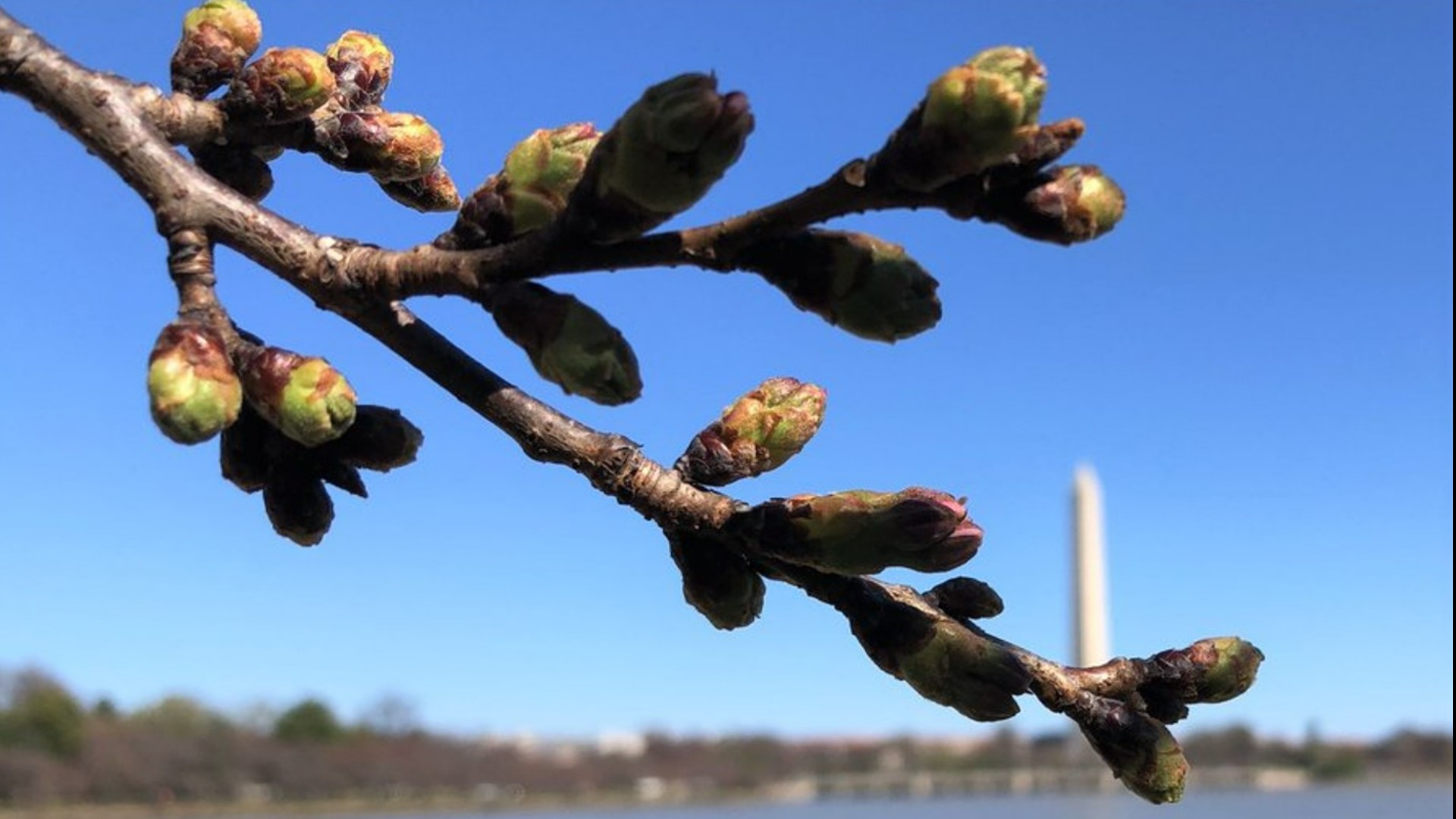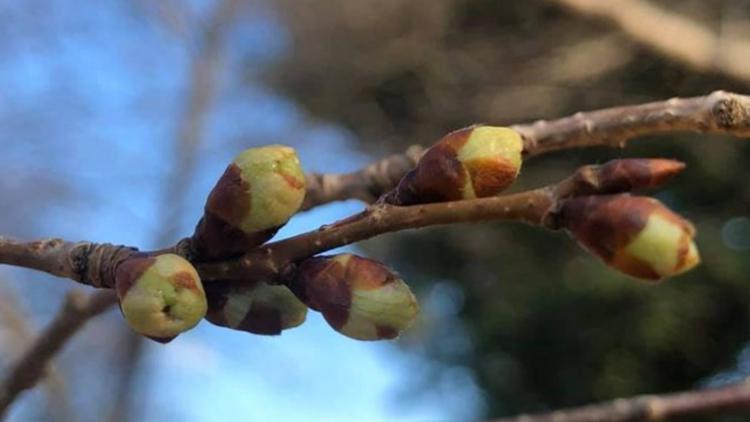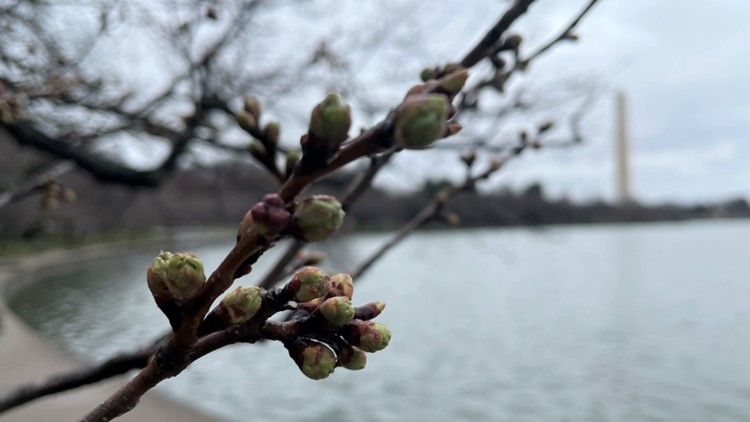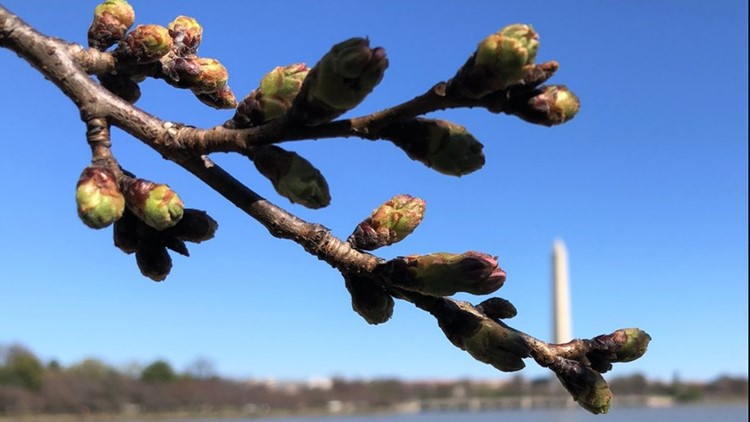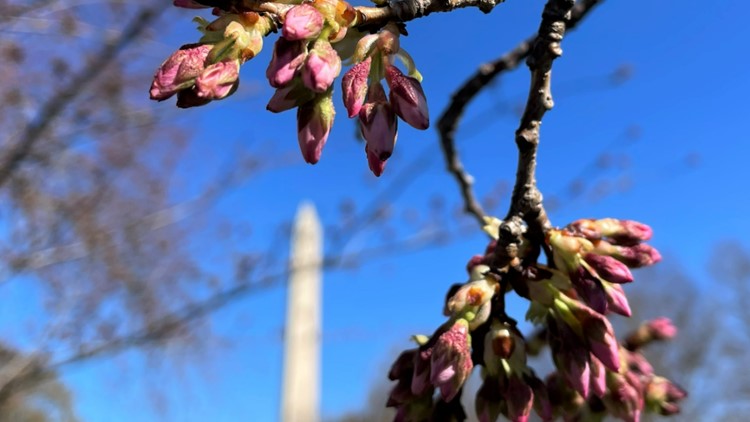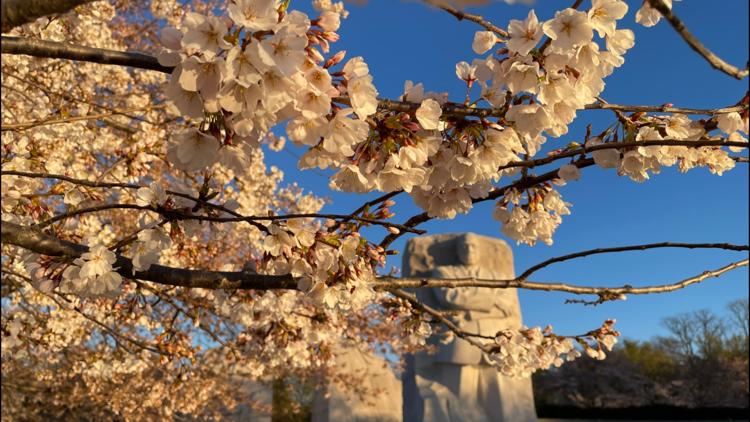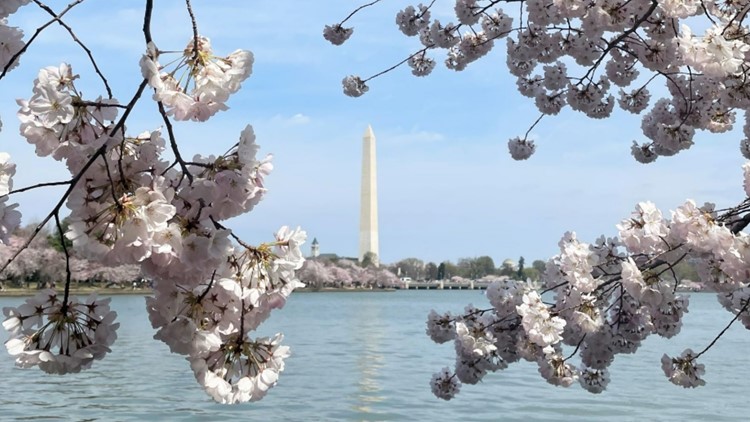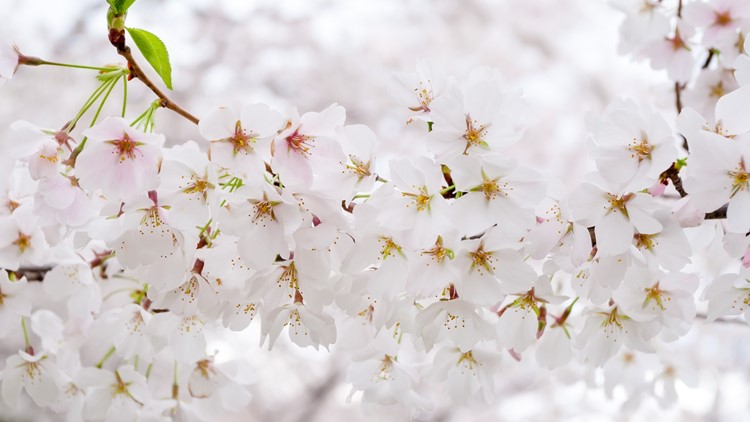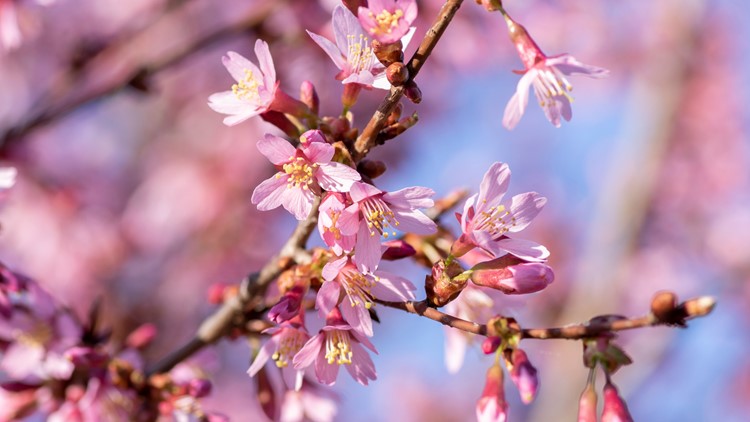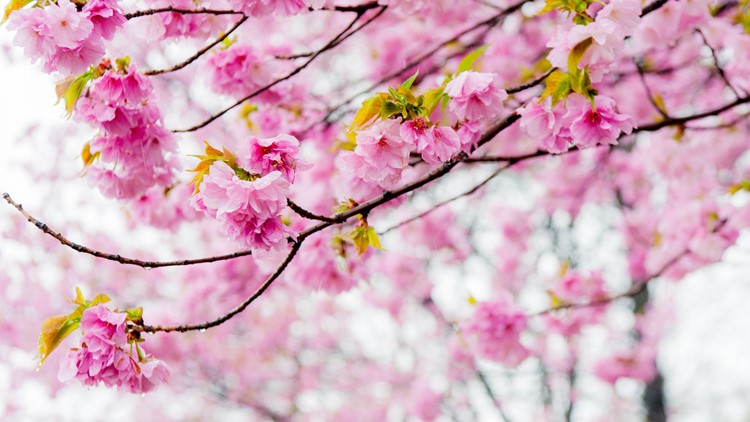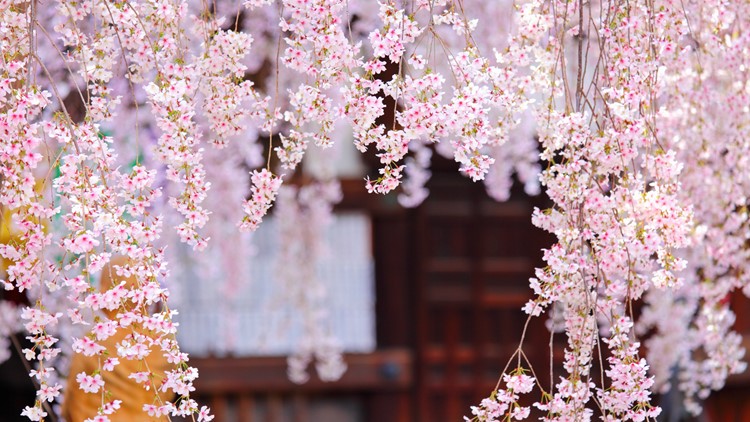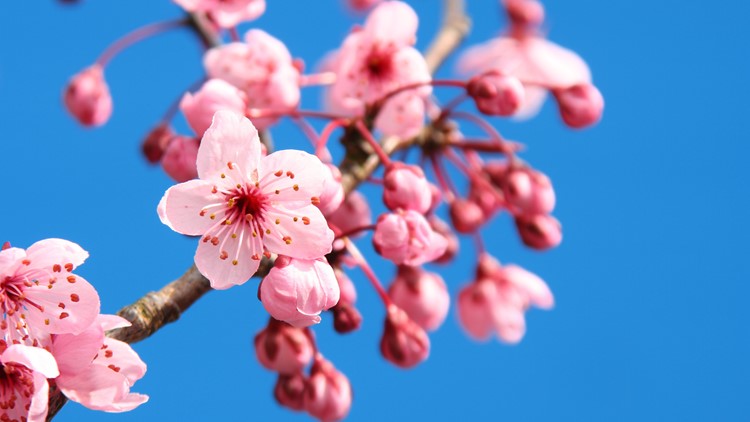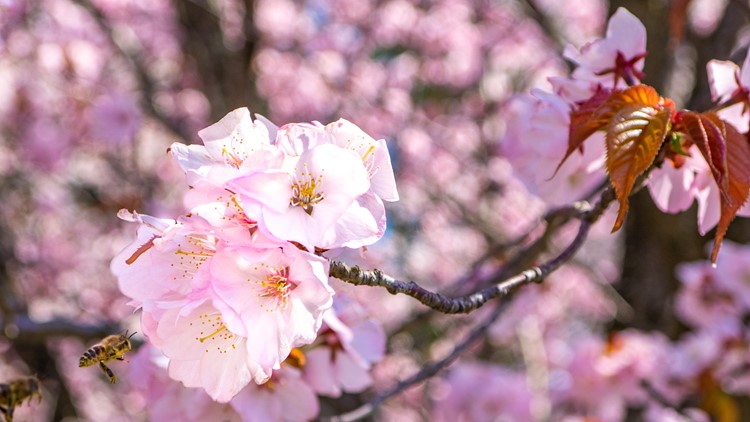WASHINGTON — The D.C. cherry blossoms are moving along, and we've officially reached stage 3 on Friday – which is halfway to peak bloom.
According to the National Park Service (NPS), the cherry trees officially started the process of budding and reached stage 1 on March 2 and stage 2 on March 5. The blossoms went from stage 1 to stage 2 in just three days. The is the fastest progression from stage 1 to 2 in 20 years. The NPS confirmed the trees have now moved to stage three, meaning the florets have extended. The NPS also confirmed that the strong winds Sunday and Monday will not be damage the buds.
Last year, budding began earlier on Feb. 23, with stage 3 coming on March 7 – and peak bloom arriving on March 23.
NPS says that D.C.'s iconic cherry blossoms are expected to reach peak bloom this year between March 23 and March 26.
Though, NPS's website says, "Forecasting peak bloom is almost impossible more than 10 days in advance. The cherry trees' blossom development is dependent on weather conditions. National Park Service horticulturists monitor bud development and report the status of the blossoms."

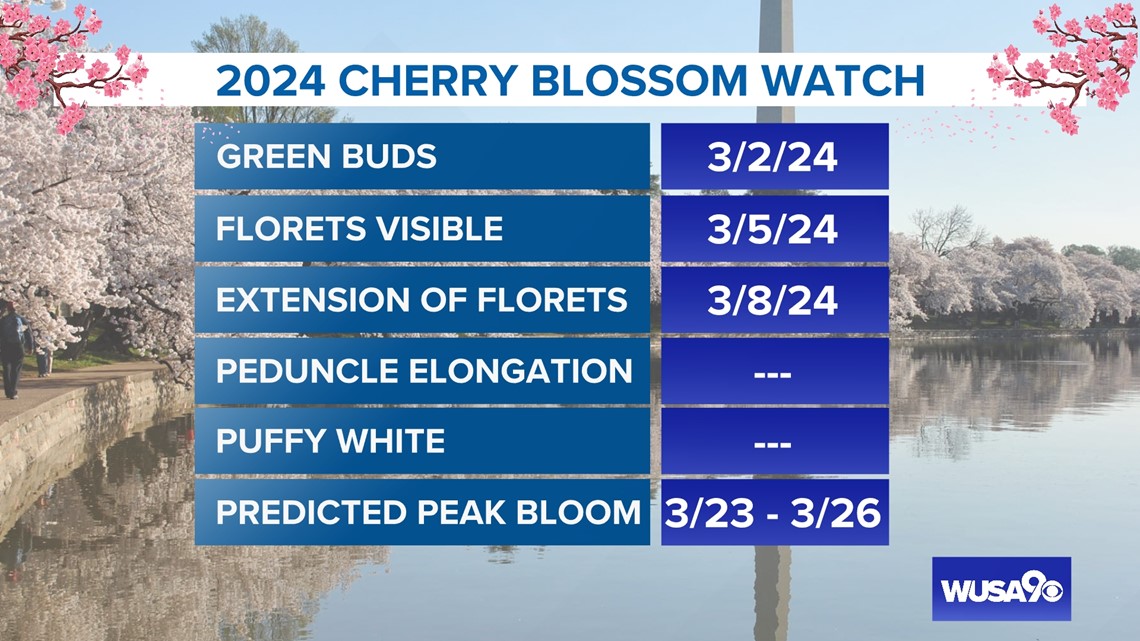
Here are the six stages NPS tracks:
- Green bud
- Florets visible
- Extension of florets
- Peduncle elongation
- Puffy blossom
- Peak bloom
There are several indicator trees that bloom ahead of the rest, so the National Park Service monitors their progress to determine when peak bloom for the rest of the basin may be.
Estimating peak bloom is a difficult process, keeping experts on their toes all the way up to announcement day. In 2021, peak bloom came about a week earlier than anticipated. The NPS uses a combination of temperature analyses, historical records and indicator trees to make their estimate every year.
Click here to learn more about how NPS uses indicator trees to predict peak bloom.
Weather's Influence
Weather can speed up or slow down the blooming process. Warmer weather helps the cherry blossoms bloom faster, while cold weather can slow down the growth.
One of the earliest peak blooms was March 15, 1990, and due to cold weather, one of the latest was April 18, 1958.
When we get a warm-up followed by a late freeze, it can prove detrimental to the cherry blossoms. Such was the case in 2017, when a late freeze between March 14-17 killed nearly half of the cherry blossoms. Peak bloom was March 25 that year.
Tracking the DC cherry blossoms
Climate Change Impact
NPS also has teams of scientists studying the impact of climate change on cherry blossoms and what peak bloom data can tell us about climate change.
"Cherry tree dates vary from year to year, but the long-term trend shows earlier and earlier blooming," said NPS climate change scientist Patrick Gonzalez.
Since 1946, D.C.'s average temperature has increased by 1.6 degrees C per century, which is double the global rate. In flowering trees, heat breaks winter dormancy, so scientists believe earlier cherry blooming is caused by climate change.
"If we don't reduce emissions from cars, power plants and deforestation additional warming could advance spring blooming by another week to month by the end of the 21st century," Gonzalez said.
Flooding at the Tidal Basin is also a problem for the cherry blossoms. NPS says cherry trees are meant to grow on dry land and require fresh water. When the Tidal Basin floods, freshwater along with brackish water flows over the roots of the cherry trees. Brackish water is a mix of salt and fresh water.
The National Park Service is concerned that salt intrusion in the soil can weaken and eventually kill a cherry tree.
Types of Cherry Blossoms
The famous cherry blossoms around the Tidal Basin are mostly Yoshino cherry trees, which produce the white blossoms that create the white cloud effect. NPS says Yoshinos are a hybrid flower that was first introduced in 1872, now they are one of the most popular cultivated flowering cherry trees. There are actually 11 different types of cherry blossoms in and around D.C.
Different Varieties of Cherry Blossoms in DC
Do you have a news tip on this story or any other story? We want to hear from you. Tell us about it by emailing newstips@wusa9.com.
MORE WAYS TO GET WUSA9
DOWNLOAD THE WUSA9 APP
Apple App Store: WUSA9 News on Apple
Google Play Store: WUSA9 News on Android
HOW TO ADD THE FREE WUSA9+ APP TO YOUR STREAMING DEVICE
ROKU: add the channel from the ROKU store or by searching for WUSA9.
For both Apple TV and Fire TV, search for "WUSA9" to find the free app to add to your account. Another option for Fire TV is to have the app delivered directly to your Fire TV through Amazon.
SIGN UP TO RECEIVE WUSA9 NEWSLETTER
Subscribe to our daily WUSA9 Newsletter for top stories from WUSA9 curated daily just for you. Get content and information right now for can’t-miss stories, Commanders content, weather, and more delivered right to your inbox.

